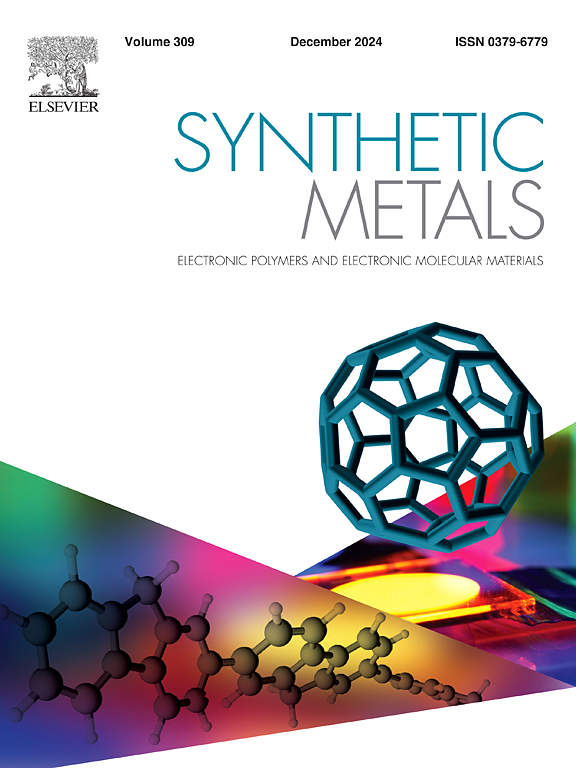具有界面锚定生长层的超薄银电极用于柔性有机发光器件
IF 4.6
3区 材料科学
Q2 MATERIALS SCIENCE, MULTIDISCIPLINARY
引用次数: 0
摘要
超薄银电极具有低片阻和高透光率的特点,是柔性光电器件的候选材料。然而,当银层过薄(<10 nm)时,超薄银层服从Volmer-Weber生长模式,因此制造具有优异光电性能和机械稳定性的超薄银电极具有挑战性。本文提出了丝氨酸(Ser)通过-OH基团与银原子之间的化学键作用介导超薄银膜的生长。聚乙烯对苯二甲酸乙二醇酯(PET)/Ser/Ag(7 nm)/MoO3(20 nm)的复合透明电极具有~ 8.5 Ω/sq的低片电阻,550 nm处的高光学透过率为~ 87.2 %,在弯曲半径为5 mm时具有100,000次弯曲循环的强大机械稳定性。优异的性能可归因于Ag膜生长过程中Ag- o键的形成,使得Ag膜生长均匀,与衬底的附着力突出。基于复合透明电极构建了柔性有机发光器件,最大亮度为~ 14070 cd/m2,最大电流效率为~ 7.5 cd/ a。本文章由计算机程序翻译,如有差异,请以英文原文为准。
Ultrathin Ag electrodes with an interfacial anchoring growth layer for flexible organic light-emitting devices
Ultrathin Ag electrodes with the low sheet resistance and high optical transmittance are the candidates for applications in flexible optoelectronic devices. However, the fabrication of ultrathin Ag electrodes with excellent optoelectrical properties and mechanical stability is challenging due to the fact that the ultrathin Ag layer obeys the Volmer-Weber growth mode when the Ag layer is too thin (<10 nm). In this paper, serine (Ser)-mediated anchoring the growth of ultrathin Ag films was proposed by the chemical bonding interactions between the group of -OH in Ser and Ag atoms. The composite transparent electrode of polyethylene terephthalate (PET)/Ser/Ag (7 nm)/MoO3 (20 nm) possesses a low sheet resistance of ∼8.5 Ω/sq, a high optical transmittance of ∼87.2 % at 550 nm and the robust mechanical stability of 100,000 bending cycles at a bending radius of 5 mm. The excellent performance can be attributed to the formation of Ag-O bonds during the growth procedure of Ag films, resulting in the uniform growth of Ag films and outstanding adhesion to substrates. Flexible organic light-emitting devices were constructed based on the composite transparent electrodes, achieving a maximum luminance of ∼14070 cd/m2 and a maximum current efficiency of ∼7.5 cd/A.
求助全文
通过发布文献求助,成功后即可免费获取论文全文。
去求助
来源期刊

Synthetic Metals
工程技术-材料科学:综合
CiteScore
8.30
自引率
4.50%
发文量
189
审稿时长
33 days
期刊介绍:
This journal is an international medium for the rapid publication of original research papers, short communications and subject reviews dealing with research on and applications of electronic polymers and electronic molecular materials including novel carbon architectures. These functional materials have the properties of metals, semiconductors or magnets and are distinguishable from elemental and alloy/binary metals, semiconductors and magnets.
 求助内容:
求助内容: 应助结果提醒方式:
应助结果提醒方式:


